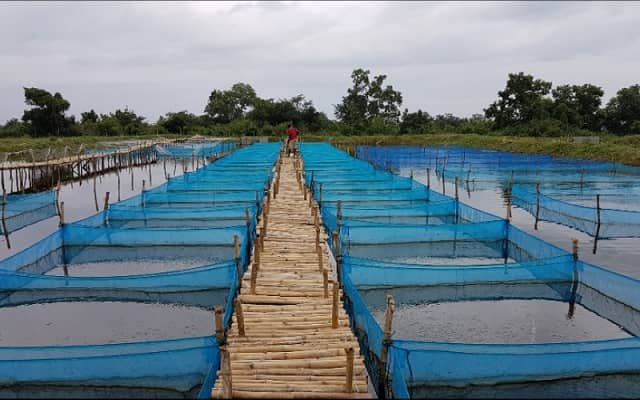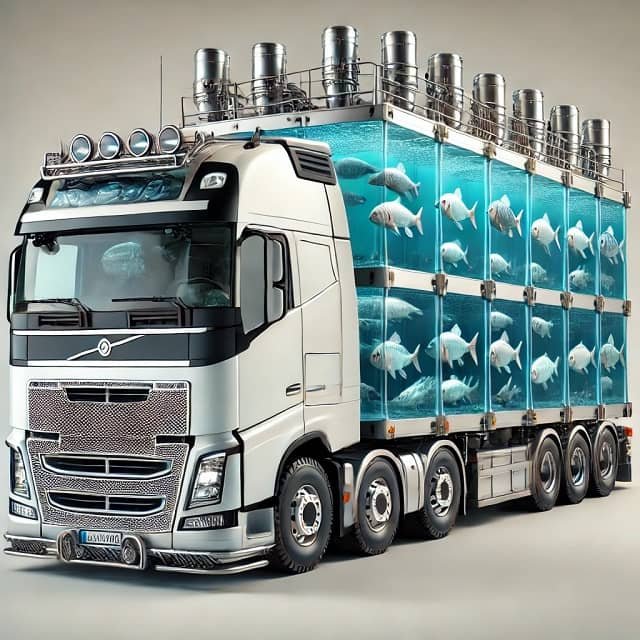
Get ready for a wave of innovation! The fish and seafood processing industry is undergoing a digital transformation driven by Industry 4.0 technologies. A recent study explored how Fourth Industrial Revolution technologies such as artificial intelligence (AI) and the Internet of Things (IoT) are reshaping the fishing industry.
A team of researchers from the Cochin University of Science and Technology (India) and the Josip Juraj Strossmayer University of Osijek (Croatia) published a scientific review examining the impact of Industry 4.0 technological advancements on fish and seafood processing operations, spanning from sorting, cleaning, and packaging to quality assessment and product preservation.
A systematic look at technological advancements
- 1 A systematic look at technological advancements
- 2 Benefits of Industry 4.0 for processing industry
- 3 Industry 4.0 toolkit
- 4 Maintaining maximum freshness: Advanced processing techniques
- 5 The rise of smart seafood: embracing Industry 4.0
- 6 Building a sustainable future: Industry 4.0 as a catalyst for change
- 7 More than just automation: a shift in jobs
- 8 Knowledge gaps and the way forward
- 9 Conclusion
- 10 Entradas relacionadas:
The research employed a Systematic Literature Review (SLR), a rigorous method for analyzing scientific literature. This approach ensures a comprehensive and unbiased assessment of existing research on Industry 4.0 and its impact on the fish and seafood processing industry.
Researchers used bibliometric analysis, a technique examining how scientific literature is interconnected. This analysis revealed ten key groups including “Seafood,” “Industry 4.0,” “Technology,” and “Sustainability,” highlighting the strong connection between these advancements and their potential to achieve a more sustainable fish and seafood processing industry.
Benefits of Industry 4.0 for processing industry
Imagine robots sorting fish by species or AI systems monitoring freshness—that’s the power of Industry 4.0 at play. The study, based on a thorough analysis of scientific articles, underscores the impact of these advancements across the seafood supply chain. From catch to processing and packaging, here’s how Industry 4.0 is making waves:
- Smarter sorting and processing: Repetitive tasks like cleaning and sorting fish are being automated through robotics and computer vision, translating to higher efficiency and reduced human error.
- AI-driven quality control: Picture a world where AI can assess fish quality in real-time. This futuristic vision is becoming reality, ensuring only the freshest fish and seafood reach your plate.
- Sustainable solutions: Industry 4.0 isn’t just about efficiency; it’s also about environmental stewardship. The study identifies the potential of these technologies to optimize energy use, minimize waste, and develop innovative packaging solutions.
Industry 4.0 toolkit
Industry 4.0 provides a powerful toolkit including technologies such as:
- Automation and robotics: Imagine robots sorting fish by size and species or filleting them with minimal waste. This frees up human workers for higher-level tasks and ensures consistent quality.
- Blockchain: Blockchain technology can track seafood products from “catch to consumer,” providing consumers crucial information about the origin and sustainability of their food.
- Computer vision and AI: AI-driven systems can analyze images to assess fish quality, detect diseases, and optimize processing procedures.
- Internet of Things (IoT): Integrated sensors in equipment and packaging can monitor everything from water quality in aquaculture to temperature during transportation, ensuring product safety and freshness.
Maintaining maximum freshness: Advanced processing techniques
The greatest challenge in fish and seafood processing is ensuring freshness. The study reports that Industry 4.0 offers a suite of solutions:
- Ultrasound treatments, high-pressure processing, and smart packaging extend shelf life and minimize waste.
- Automation and robotics streamline filleting, sorting, and quality control, enhancing consistency and efficiency.
- AI and computer vision identify defects with superior accuracy, ensuring only the highest-quality products reach consumers.
The rise of smart seafood: embracing Industry 4.0
Industry 4.0 goes beyond mere automation. Here’s how it strengthens the fishing industry:
Stay Always Informed
Join our communities to instantly receive the most important news, reports, and analysis from the aquaculture industry.
- Real-time data from sensors enables producers to monitor environmental impact and optimize practices for sustainable fishing.
- Enhanced cold storage techniques and smart packaging further minimize spoilage and waste across the supply chain.
- A shift towards specialized roles emerges as repetitive tasks are automated, necessitating a skilled workforce to operate, maintain, and analyze advanced technologies.
Building a sustainable future: Industry 4.0 as a catalyst for change
The fishing industry faces the crucial task of balancing consumer demand with resource conservation. Industry 4.0 offers powerful tools to achieve this:
- Waste reduction: Smart systems optimize processing and minimize discards.
- Enhanced traceability: Consumers gain transparency about the origin and journey of their seafood, promoting responsible fishing practices.
- Data-driven decision-making: Real-time data empowers stakeholders to make informed decisions for a sustainable future.
More than just automation: a shift in jobs
The study highlights that Industry 4.0 won’t eliminate jobs in the fishing sector. Instead, it will create a need for a more specialized workforce. Workers will transition from manual labor to roles focused on maintaining and operating these intelligent systems, creating a more skilled and value-added industry.
Knowledge gaps and the way forward
While the potential of Industry 4.0 is undeniable, more research is needed:
- Comprehensive impact assessments: A deeper understanding of the social and economic implications of these advancements is crucial.
- Knowledge transfer to SMEs: Smaller players need support in adopting these technologies to ensure widespread benefits.
Conclusion
“Industry 4.0 technologies have the potential to greatly enhance sustainable resource management in the fishing sector. These technologies can enable ecologically responsible and sustainable management of marine resources by optimizing procedures, minimizing waste, and improving traceability,” concluded the researchers.
The incorporation of Industry 4.0 technologies is revolutionizing the fishing industry. From ensuring the freshest catch to promoting sustainable practices, these innovations are shaping a future where we can enjoy delicious seafood responsibly sourced for generations to come.
Contact
Marko Šostar
Associate Professor, Faculty of Tourism and Rural Development in Pozega, Josip Juraj Strossmayer University of Osijek
Osijek, Croatia
Email: msostar@ftrr.hr
Reference (open access)
Subash, A., Ramanathan, H.N. & Šostar, M. From catch to consumer: enhancing seafood processing management with Industry 4.0 innovations. Discov Food 4, 43 (2024). https://doi.org/10.1007/s44187-024-00115-6
Editor at the digital magazine AquaHoy. He holds a degree in Aquaculture Biology from the National University of Santa (UNS) and a Master’s degree in Science and Innovation Management from the Polytechnic University of Valencia, with postgraduate diplomas in Business Innovation and Innovation Management. He possesses extensive experience in the aquaculture and fisheries sector, having led the Fisheries Innovation Unit of the National Program for Innovation in Fisheries and Aquaculture (PNIPA). He has served as a senior consultant in technology watch, an innovation project formulator and advisor, and a lecturer at UNS. He is a member of the Peruvian College of Biologists and was recognized by the World Aquaculture Society (WAS) in 2016 for his contribution to aquaculture.




